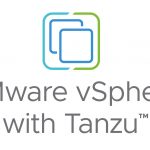While presenting the storage performance talks, I frequently get asked about Solid State Device (SSD) performance in a virtualized environment. Well obviously, SSD’s or EFD’s (Enterprise Flash Disks) are great for performance especially if you have storage intensive workloads. As seen in the previous post in this series, SSDs can provide significantly more IOPs and significantly lower latencies. But the two big questions are ”how much of a gain might I expect” and “how much SSD storage do I need to achieve that gain” when using SSDs in a virtualized environment.
There are two studies that do a great job at painting a good picture for the performance of SSDs in a virtualized environment, and answering those two questions. Both studies use VMware’s VMmark benchmark, a virtualization platform benchmark for x86-based computers used mostly by our hardware partners to determine the performance of their hardware platforms when running in a virtualized environment.
The first study answers the questions of how much of a gain might I be able to achieve from using SSDs in my environment. As with all performance data your mileage may vary, but by using VMmark which simulates a collection of different workloads typically seen in a vSphere environment we can form a general idea for the impact of SSDs in a “typical” virtualized environment.
The results of the study showed that the average improvement in score for the SSD configuration was approximately 25% when compared to traditional rotating storage. Also, SSDs allowed for more consolidation, the traditional storage couldn’t support the level of consolidation at the high end (while meeting the QoS required in the VMmark benchmark). The SSD configuration could not only support the higher consolidation of six VMmark workload tiles while meeting the QoS requirements, but it also improved the overall VMmark score slightly while supporting the heaver consolidation load.
For the Full details on this study visit:
http://blogs.vmware.com/performance/2011/07/analysis-of-storage-technologies-on-clusters-using-vmmark-21.html
The second study provides guidance for the question how many SSDs do I need. Again using the VMmark benchmark as the workload, our VMmark performance team studied the performance impact of SSDs using the auto-tiering capabilities of the storage array. Unlike the previous test where ALL the traditional storage was replaced with SSDs, this study only had SSD capacity for approximately 8% of the storage footprint of the test. So only 8% of the storage required for the workload could fit in the SSDs and the rest had to utilize the traditional rotating storage. The storage array, using its auto-tiering capability, intelligently detected which storage blocks were hot and promoted those hot blocks into the SSD storage.
The results were that with only 8% of the workload’s storage footprint being able to fit in the faster tier of SSD storage, the VMmark workload was still able to achieve the 25% plus improvement that was seen in the previous study where all the storage was replaced with SSDs. A 90/10 rule is observed here. 90% of your typical workload’s IOPs are generated from just 10% of that workload’s storage footprint.
For the Full details on this study visit:
http://blogs.vmware.com/performance/2012/04/exploring-fast-cache-performance-using-vmmark-211.html
Again these studies just provide some guidance which greatly depends on your workloads, but the two studies help answer those two big questions of “how much better” and “how many do I need”.
Previous Troubleshooting Storage Performance posts:
http://blogs.vmware.com/vsphere/2012/05/troubleshooting-storage-performance-in-vsphere-part-1-the-basics-.html
http://blogs.vmware.com/vsphere/2012/06/troubleshooting-storage-performance-in-vsphere-part-2.html













